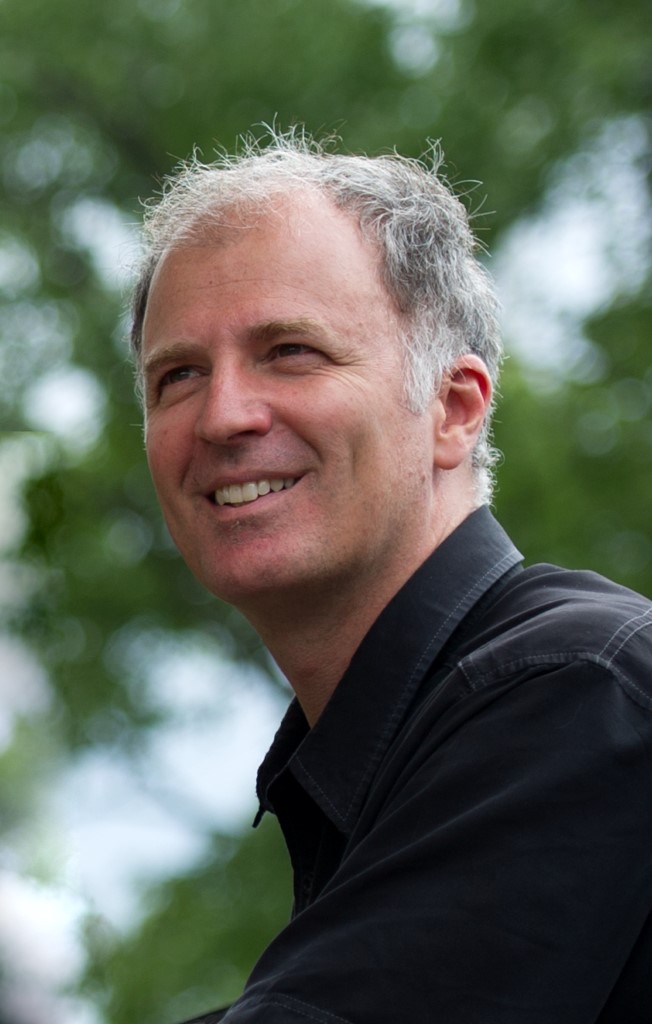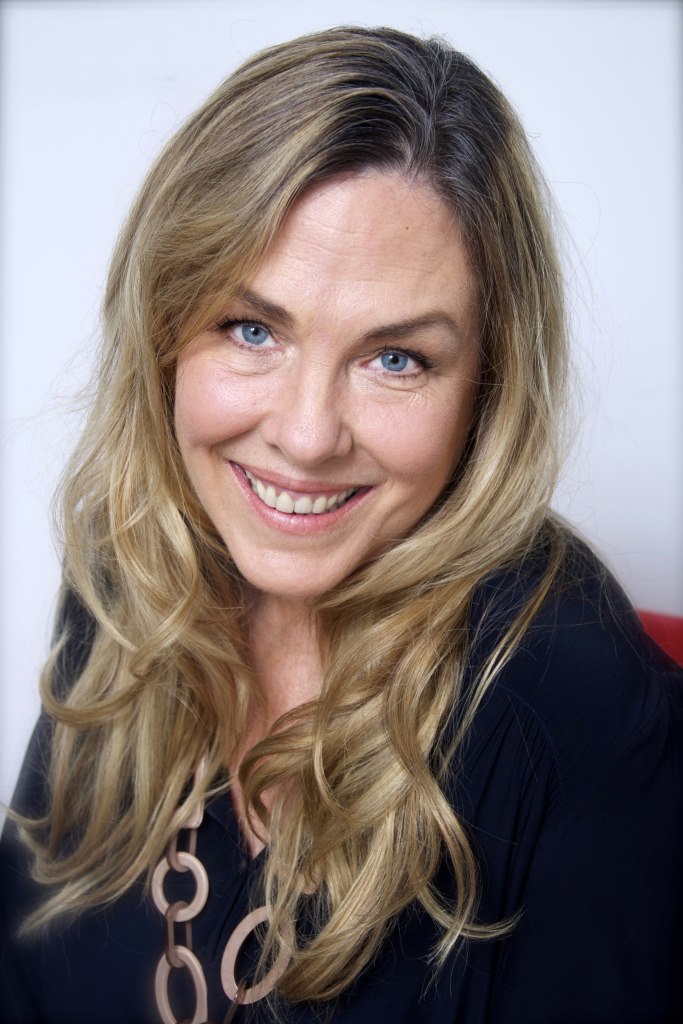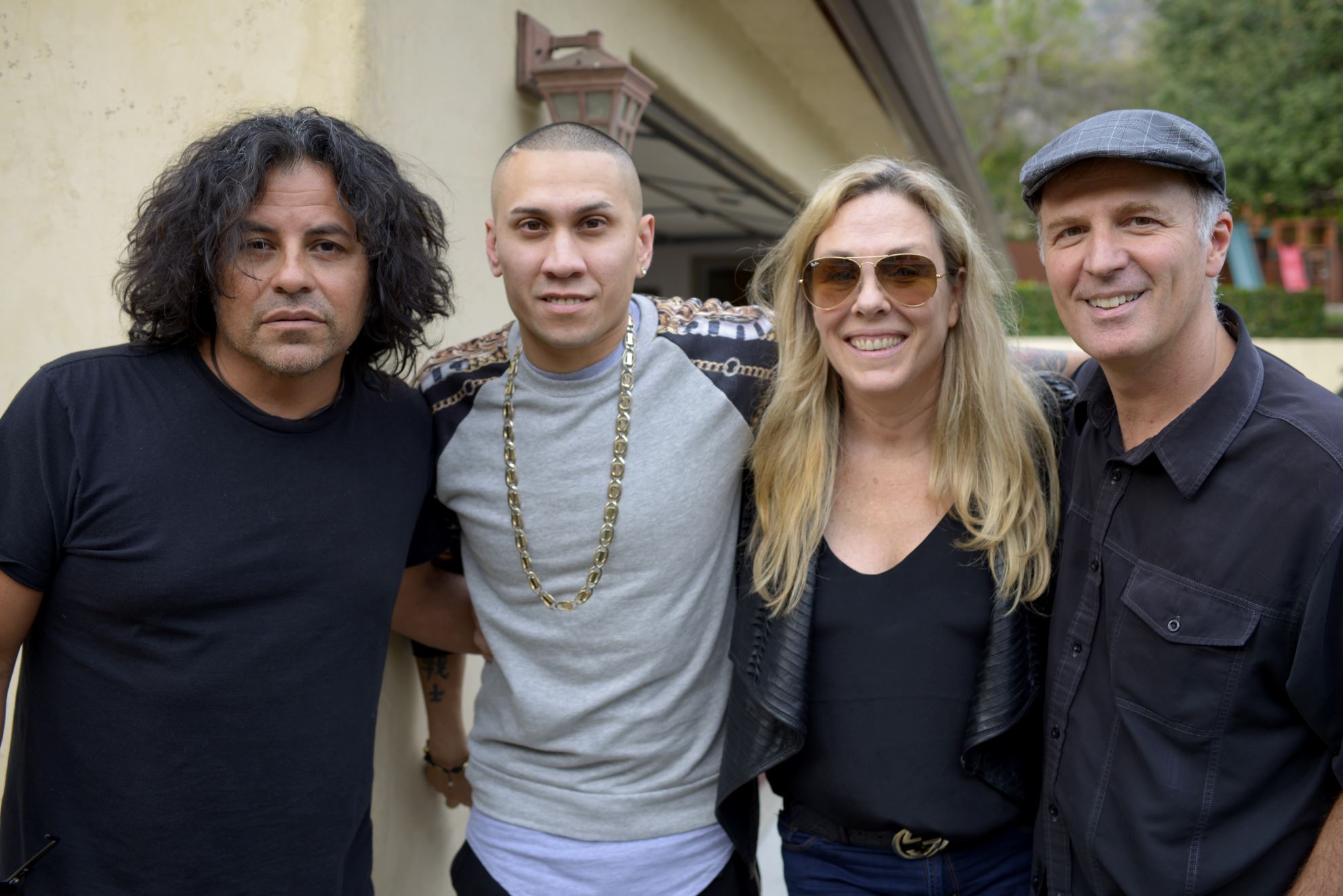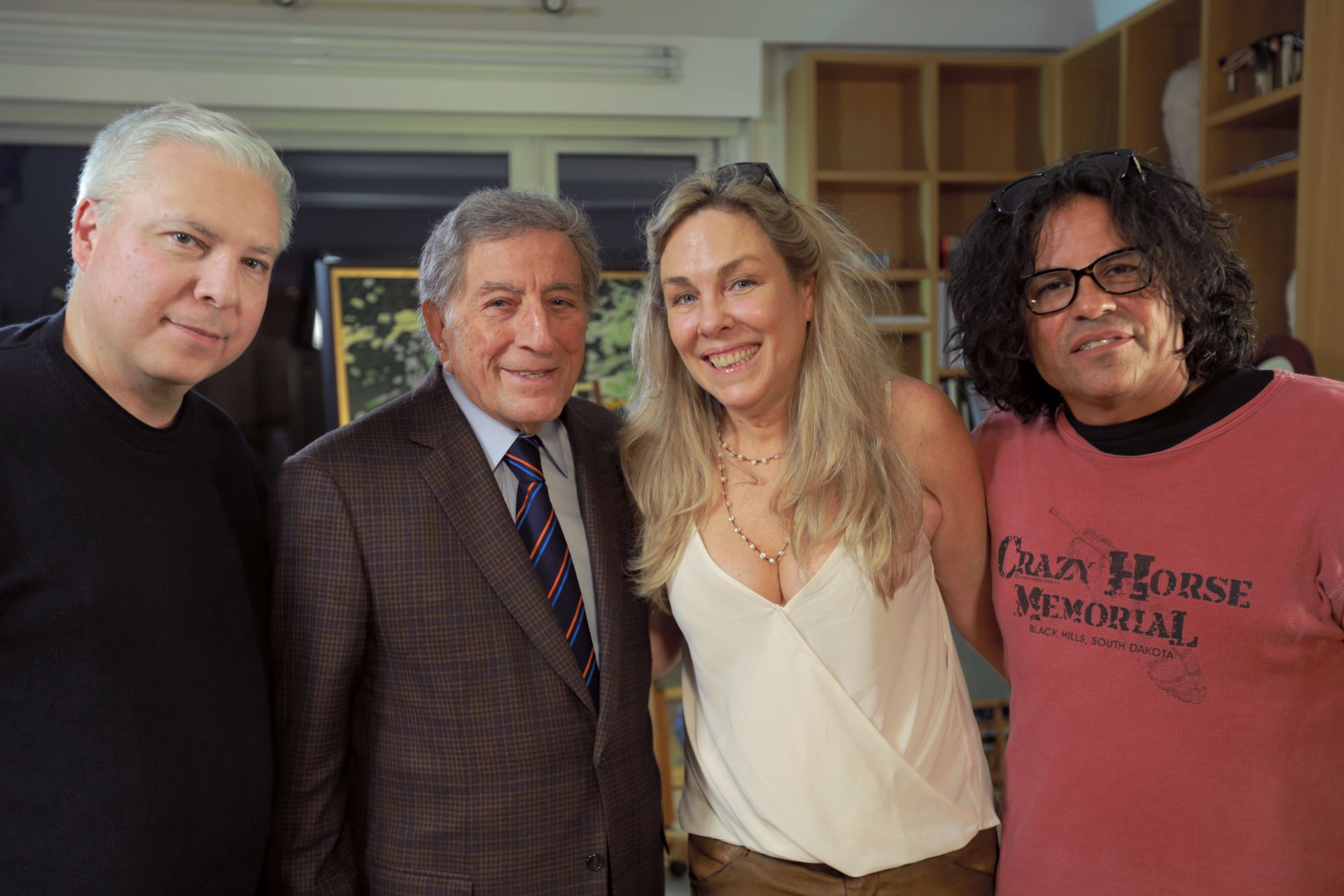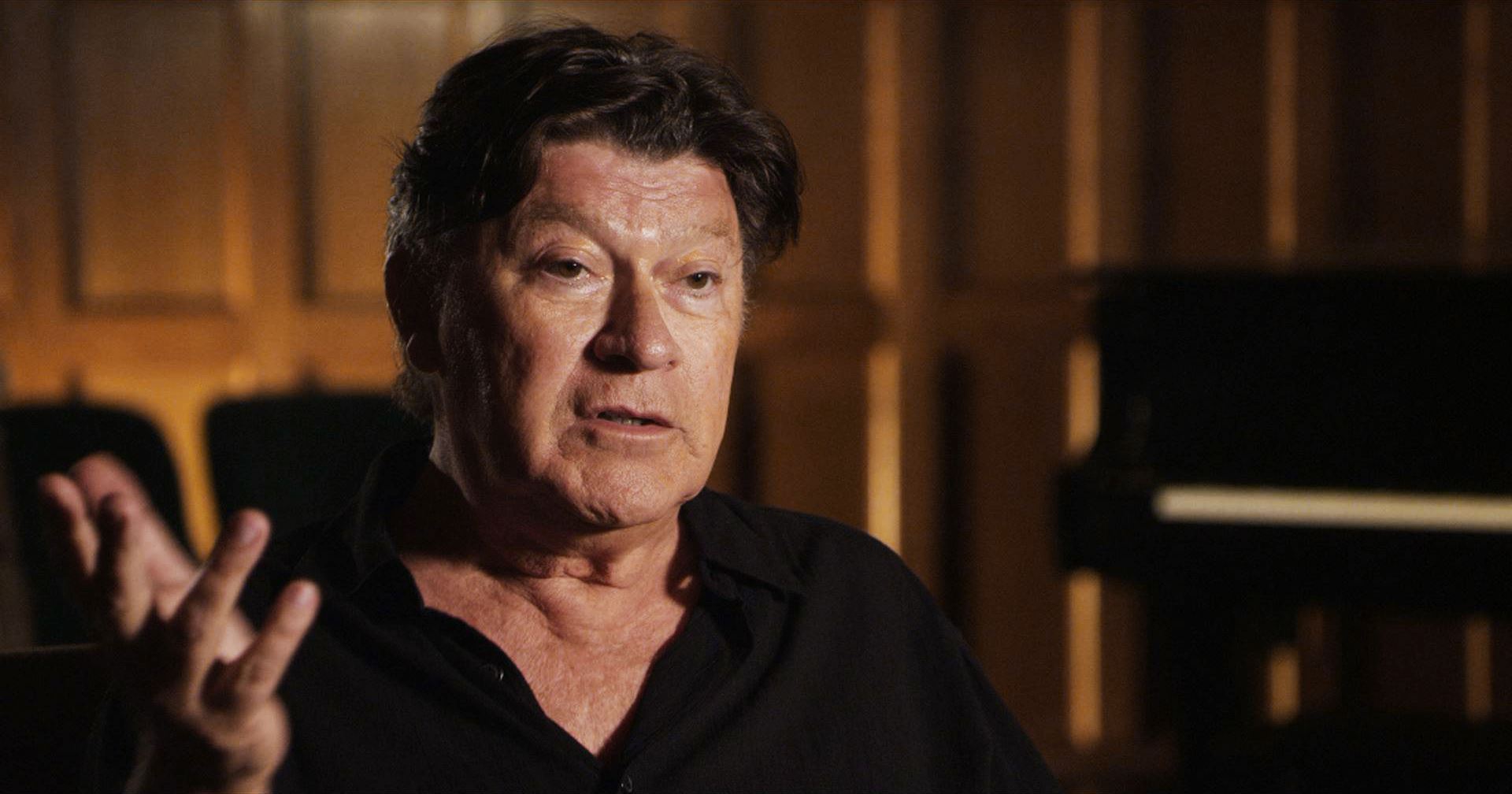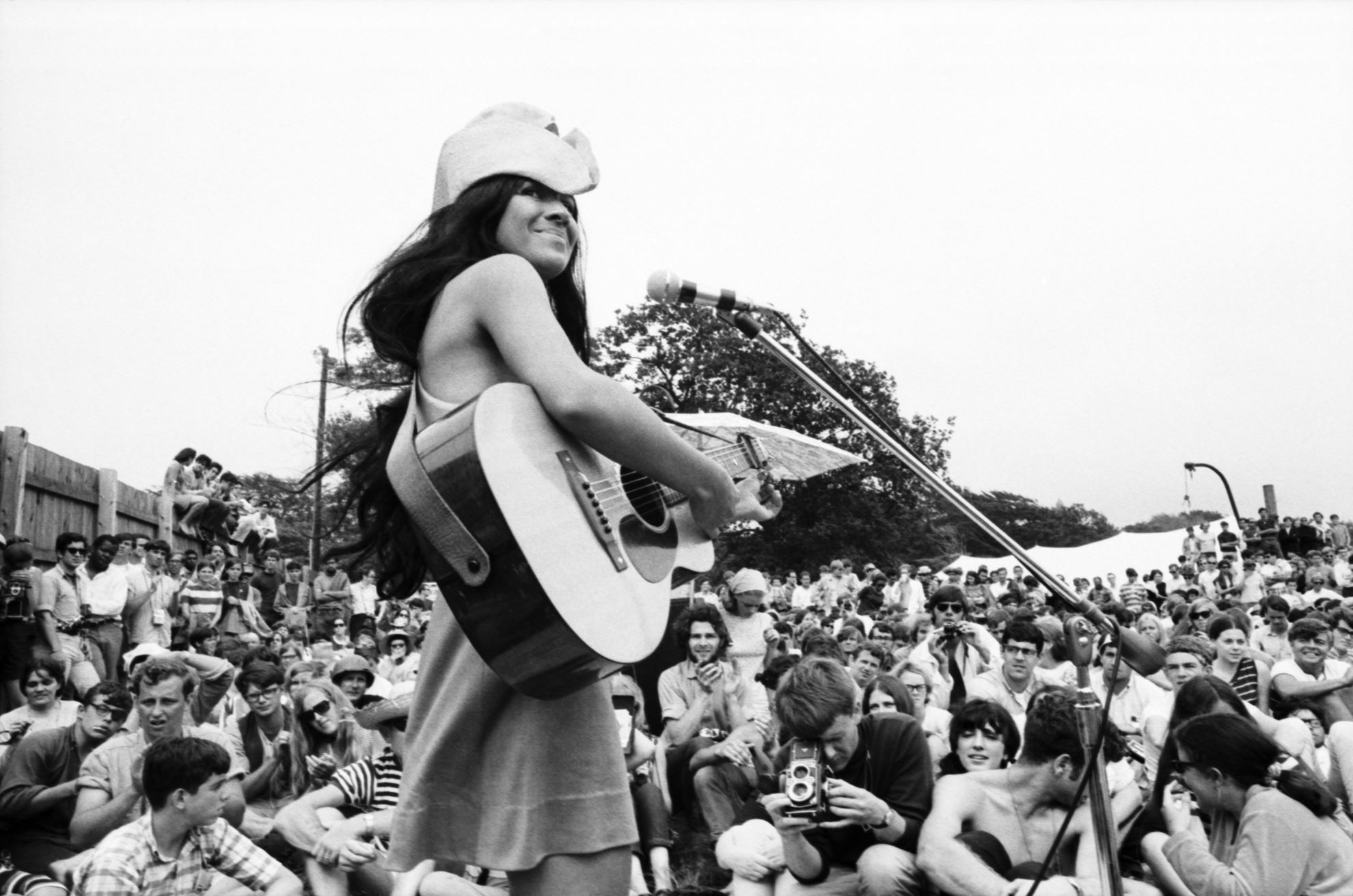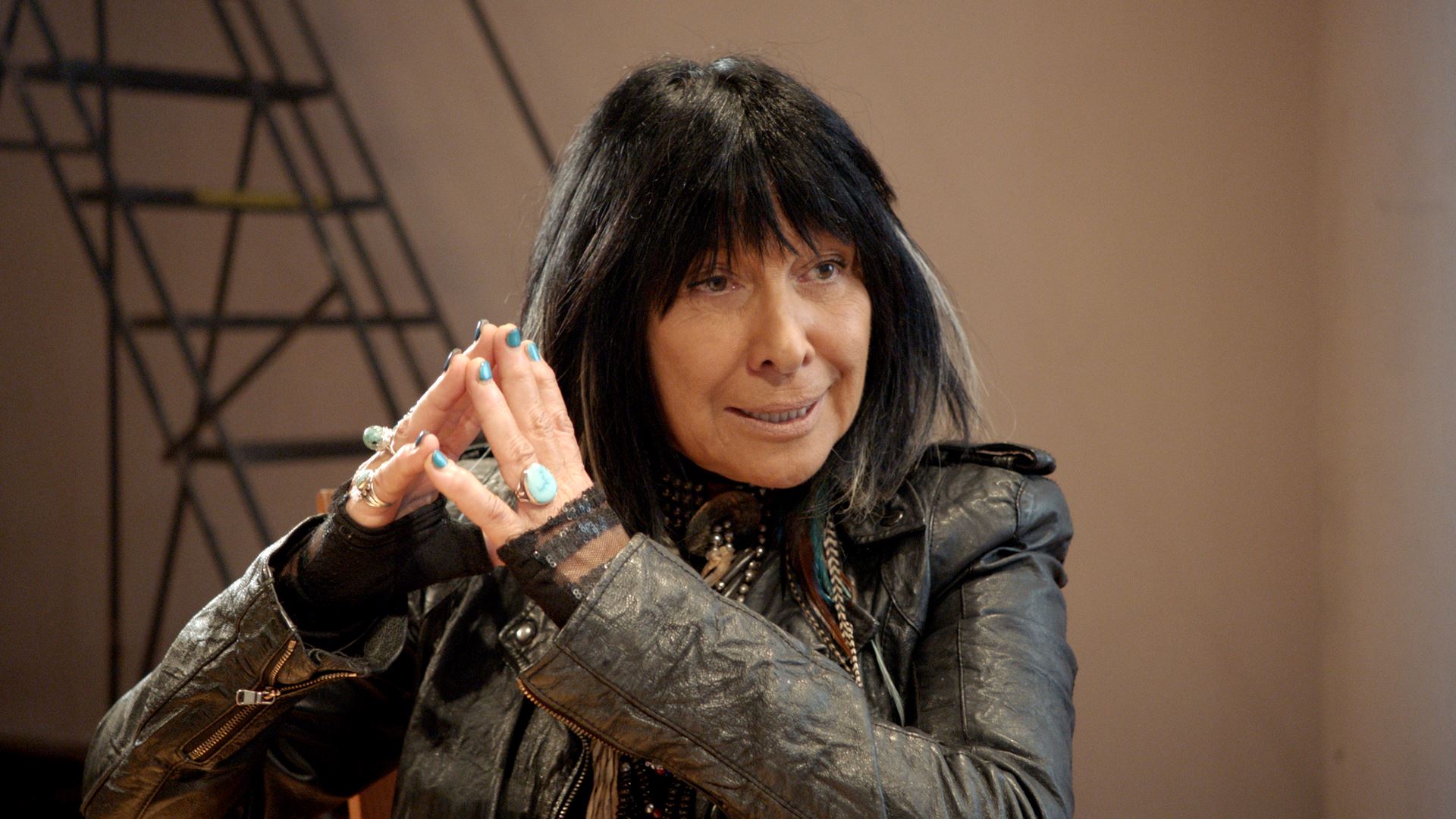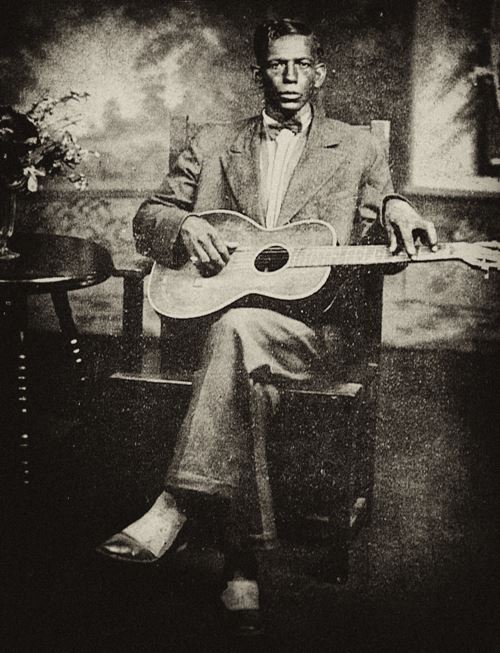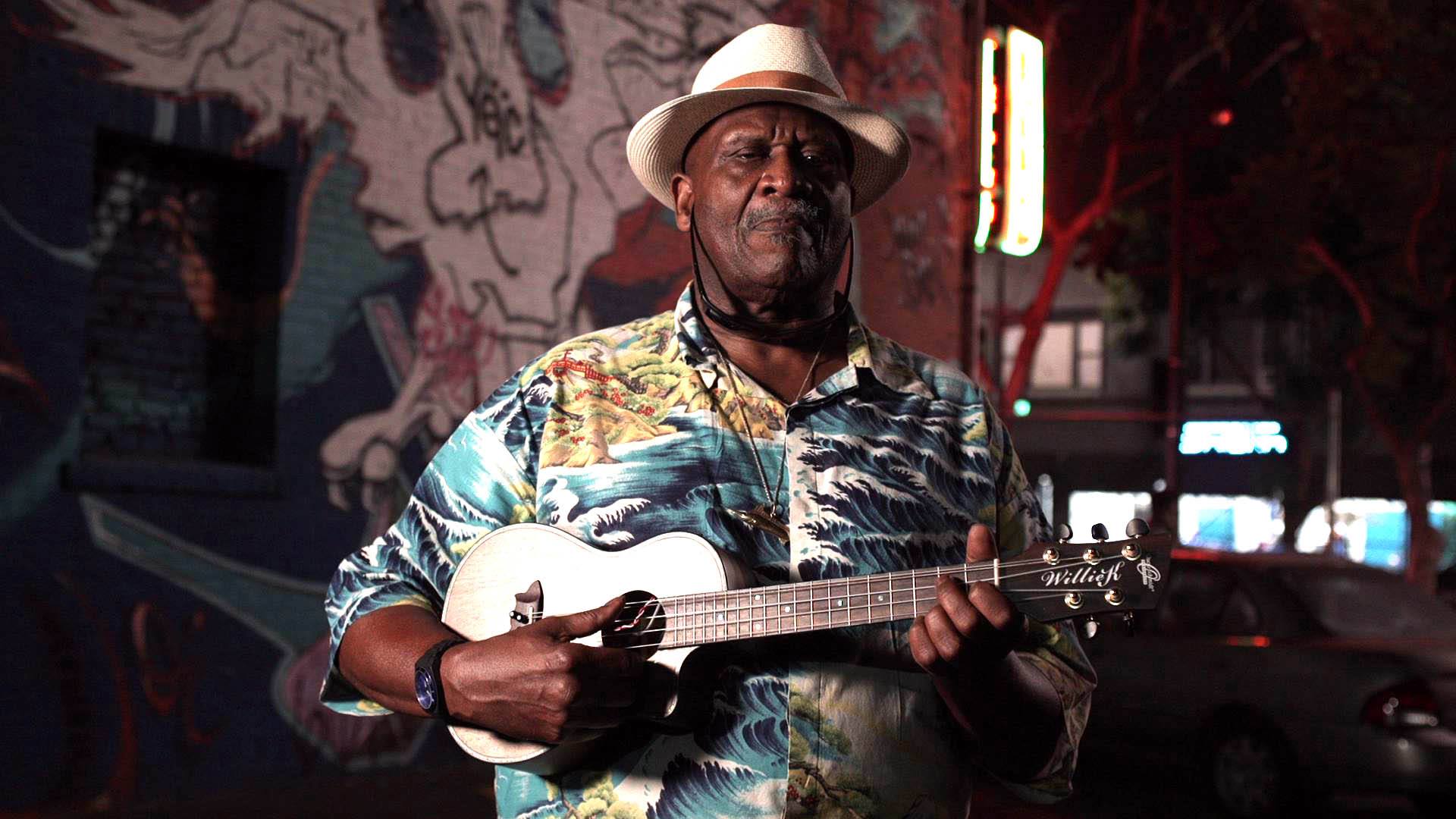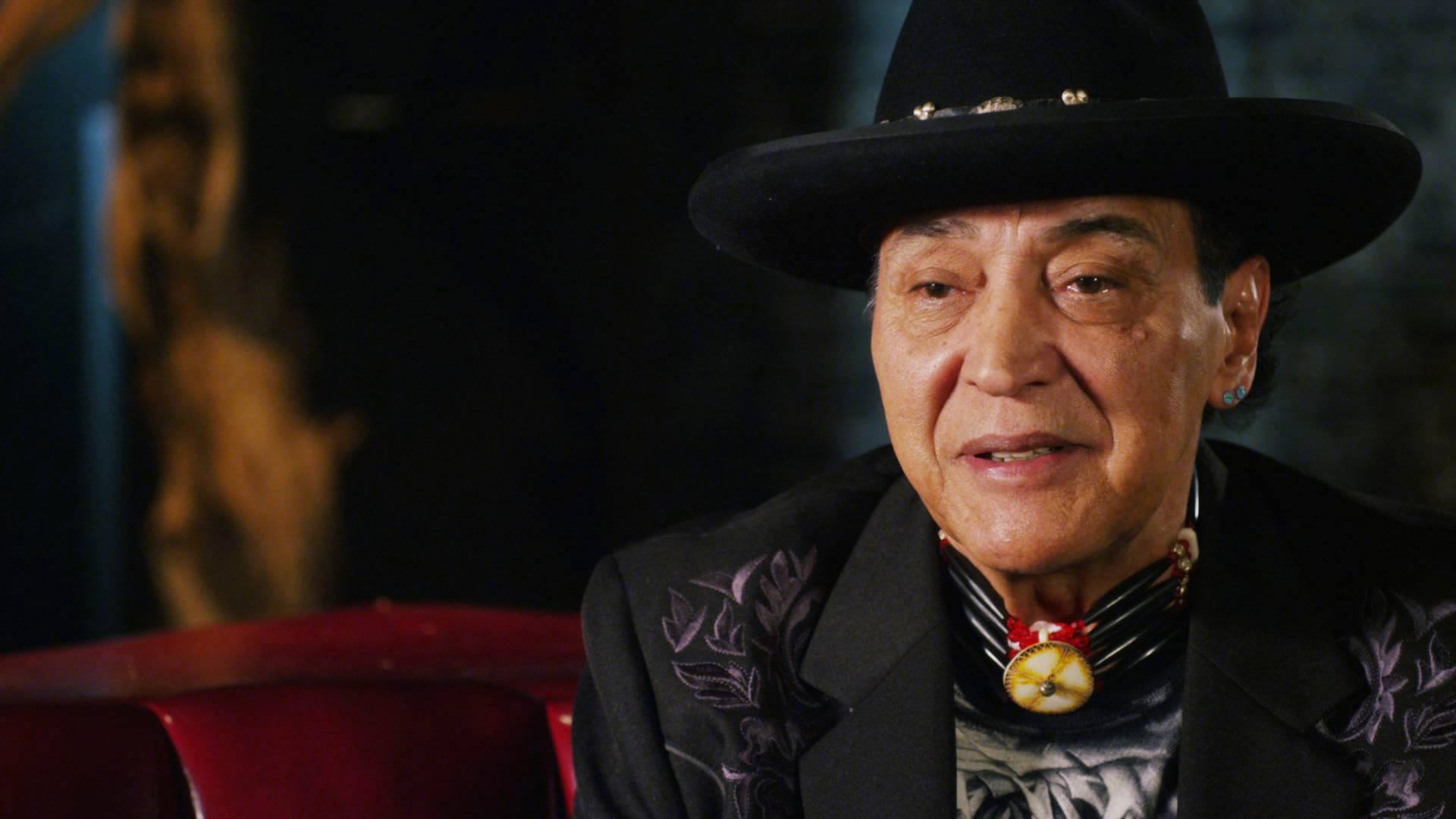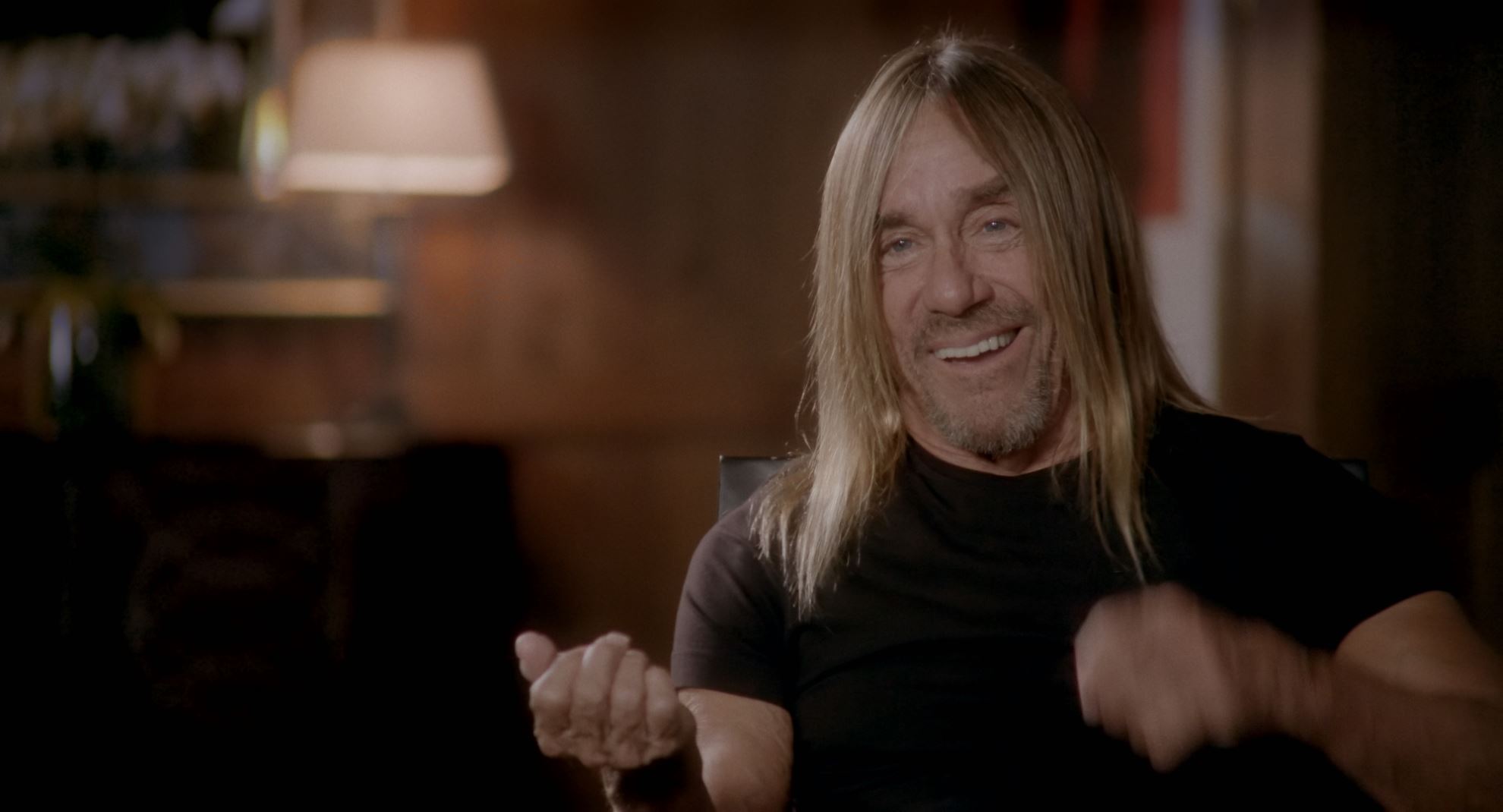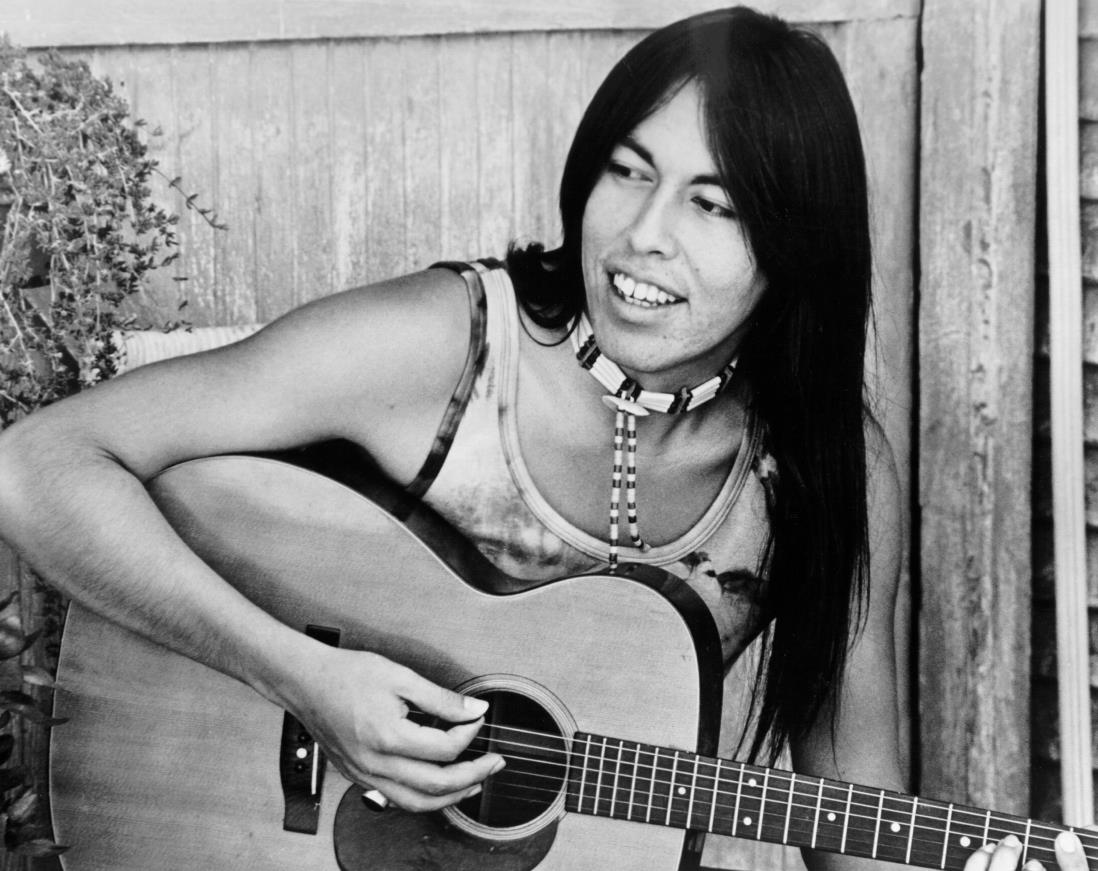How did your specific interest come out?, I mean the influence of the Native Americans in rock music.
Being a huge fan of music all my life, and I do mean all types of music, from la Tarantella Montemaranese, Pina Danielle, to african, carribean, classical, Blues, jazz, rock, punk, folk, rap, etc..., I knew about musicians that had an indigenous background. Being the son of Italian immigrants, I was always fascinated by the cultural background of each artist I followed. Why? I believe it has everything to do with your expression of art meaning music, painting, filmmaking etc...
I grew up a few km from a first nations community. I had friends from there that I met through sports, school and work. So, RUMBLE touches my heart. When I discovered THE CLASH and THE STOOGES as a teenager, I discovered LINK WRAY. So, I looked in the encyclopedia (GOOGLE) to find out where he was from because JOE STRUMMER and IGGY POP spoike about this rebel guitar player like a hero! nAnd, I found out he was indigenous, SHAWNEE!
Thus, by making RUMBLE, we all discovered how artists like Link Wray, Mildred Bailey, Charlie Patton or Robbie Robertson influenced popular music. It comes from their deep education of traditional Native music. The drumming was a 4/4 beat which is part of the what we know as American popular music. We know the African music is a 6/8 beat, we know what classical European music is, and both have influenced popular music but we cannot deny the contribution of Native music from the beginning. The voiuce of Mildred Baileyn is trained by ancient indigenous chants which shen uses to create a unique style of jazz interpretation that influences legends like Bing Crosby, Ella Fitzgerald, Billy Holliday, Frank Sinatra and of course, Tony Bennett.
Was it difficult to find a producer for this project?
The producers found me. Catherine Bainbridge, producer /co-director and Christina Fon, producer, knew about my obsession andn passion of music and music documentaries. At first they thought of filming a short project for TV or for the Smithsonian. Stevie Salas and Tim Johnson, who had created the Exhibit called: UP WHERE WE BELONG: NATIVE MUSICIANS IN POPULAR MUSIC, had approached REZOLUTION PICTURES with that idea. When Christina Fon called me about this idea, I said this needs to be bigger, a feature film documentary because the NATIVE AMERICAN/CANADIAN contribution to popular music has never been talked about. Yet, it is a fundamental element of music history, a missing chapter that needs to be told. And by doing so, we can retrace American history, the real history through the eyes of Indigenous people. MUSIC is the perfect storyteller!
How did you shoot the film, I mean, technically? Did the editing take a long time?
It took us 5 years to film RUMBLE. We started out using an ALEXA camera, followed by the RED, then Blackmagic and ended up with the SONY F7b because it was difficult to sustain a comfortable budget. You have to understand how expensive it is to travel everywhere in the USA and CANADA, hotels, gear, food, etc...and keep the budget going. The crew was made up of Director/Cinematographer which was me, a soundman, and a camera assistant. For the renactments or fictional scenes, we had a few more technicians that helped. Being from a fictional background, I expressed to Catherine that we should try to make this film a lyrical and visual intrepretation of music history. It was important to show the land, to describe the era, the traditional music, the politics and the injustice as well as the music that come out of the struggle. I also wanted to introduce animation which was an opportunity for me to work with MEKY OTTAWA, an indigenous graphic artist with lots of talent.
The editing was a long journey because we had so much material. But, we had a structure that we wanted to respect bwhiuch we feel is present in RUMBLE. We needed to introduce every icon with a song everyone could recogniuze, where that person was from, what was going on sociallly and politically in that part of the country. The editing still needed to feel musical because it is a music documentary afterall. Our editors did a great job conveying that message.
In Rumble we see many famous and interesting personalities. Can you tell us something about it?
Did you have some difficulties to reach someone? Someone who surprised you? Someone you could not contact?
The famous artists were amazing. From day one, all of them wanted to be part of the project because they felt the same need to inform everyone of the influence of Native Americans/Canadians on popular music. They were influenced by the icons we were celebrating in RUMBLE. That was so exciting and important for the film. We needed experts, masters of music history to tell us but more so, we needed these famous musicians to provide us with further insight that solidified our argument. They knew the importance of our message and thus were fortunate that they joined us in our storytelling.
Of course reaching these famous people is not easy. It took us 3 years to get Martin Scorsese to free himself. He agreed immediately to speak about Robbie Robertson but he was working on SILENCE, so when hisnmanager called and said Martin is ready tomorrow at 1pm in NY.....WE FLEW OUT the next morning!!!
CRAZY!
IGGY POP, my favourite, was the same thing. It took us several years. In fgact, he was in Montreal launching his latest book, we had everything fianlkly set up until his manager called us to say he was too sick for an interview. Then, the following week, the manager called and said, IGGY is ready SUNDAY afternoon at 1pm at his at his hotel In Detroit. I was working on a film set (BRUCE WILLIS, Death WISH), i gotb the call friday night from my producers, so I flew out satyrday morning!!!
CRAZY!!!
IGGY surprised him how much he loved LINK WRAY...Same with Dan AUERBACH... PURE FE was incredible and probably the most important interview we did. NEVILLE BROTHERS, Tony BENNETT, LITTLE STEVEN, all amazing!
We tried desperately to get BOB DYLAN who had worked with Riobbie Robertson but was also a huge fan of CHARLIE PATTON. We could not convince his manager. TOO BAD. My biggest disappointment was not getting Pete Townshend. He agreed, then disagreed, agreed then disagreed!
What are the albums you would recommend to appreciate the roots of Native American in rock music?
BITTER TEARS album from Johnny Cash
WALELA
REDBONE Golden Classics
SACRED SPIRITS
MUSIC FOR THE NATIVE AMERICANS by Robbie Robertson
HEILUNG / LIFA
LINK WRAY
BLACKFOOT (No Reservations)
KATHLEEN IVALUARJUK MERRITT
JIMI HENDRIX (AXIS: Bold as Love)
CHARLIE PATTON (Down the Dirt Road Blues, High Water Everywhere, Pony Blues)
BUFFY SAINTE-MARIE (Nqative North American Child:An Odyssey
The appearance in Italian movie theaters is an interesting and not at all obvious event. Are you satisfied? And what about the distribution in other countries?
I have been pleasantly surprised by the interest in Italy of RUMBLE. It started with our Italian Distributors "I WONDER PICTURES" that I met at SUNDANCE last year. But at bthe same time, I am not that surprised because if there is a country in Europe that would embrace such a subject matter, it would be italians. There diverse taste in music historically has always been recognizable. So far, I am happy with the distribution and I hope it makes its way all around the country from the north to the south and to all the islands. Places like Napoli, Salerno, Avellino, Lecce, Palermo, Reggio Calabria, Sardegna as well as Udine, Venice, Torino, Verona or Genoa need to see RUMBLE!!!
What are your next projects?
Well, I recently returned from Rome after having worked alongside a talented Italian scriptwriter named Mariano Di Nardo. Inspired by actual events, I am developing a dramatic, feature film script that I hope to film one day soon in Italy, more specifically, Sardegna, Napoli and Udine. Crossing my fingers that we can find some interested Italian producers in the next coming months.
 Interview with the director Alfonso Maiorana
Interview with the director Alfonso Maiorana